
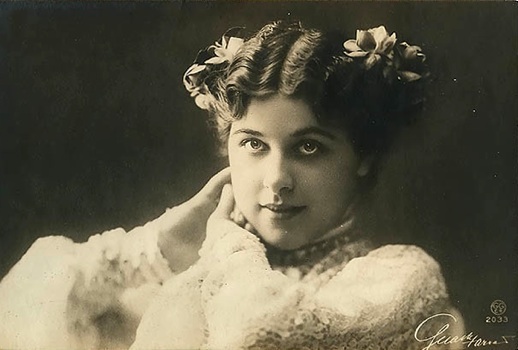
So reported the New York Times when Farrar sang her last on the stage of the Met, her 672nd performance there in a 15-season career. (By way of comparison, note that Plácido Domingo has as of this date given only five more performances at the Met than Farrar—including conducting!—though his tenure there has lasted more than three times as long as hers. But, after all, times were different back then: Farrar’s final contract with the Met guaranteed her 50 performances each season at $1,800 a night, yielding her a gross sum roughly equivalent to $1.3 million in 2015 dollars.)
The first paragraph (quoted above) of the account of the farewell gives only the mildest hint of how momentous this event (and the career that preceded it) really was. The headline offers a bit more of the flavor.
And, a little farther down in the piece, the Times describes the riotous lunacy that followed the performance:
Fortieth Street was filled between Broadway and Eighth Avenue, and traffic policemen gave up all attempt to keep a lane through it. Ecstatic debutantes and ‘sub-debs’ perched on fire escapes with bouquets and strings of ribbon, ready to shower their idol when she appeared. . . . They shrieked and waved when she came around the corner with the big American flag that had been presented to her, and the tiara on her head. . . . She climbed to an automobile, and like a carnival queen, waved kisses and dodged flowers. . . . Traffic was stalled for five minutes. . . . At last it was clear, a toot on the horn and, hastened by a fussy police car behind, the automobile party… shot up Broadway at the head of a trailing procession of Gerry-flappers two blocks long.
La Cieca proposes that in the following weeks that we try to understand the fascination with Farrar at the Met during the first quarter of the 20th century. That may not be easy. Her recordings are pretty much useless in gauging what was so special about this artist: they reveal a handsome lyric soprano, efficient technique, solid musicality and little else.
No, obviously it wasn’t the singing. So what was it that made Farrar the most popular soprano in the history of the Met? Perhaps for so highly publicized a star, the best place to begin is with her first mention in the Newspaper of Record.
May 1, 1898:
When she sang this concert, Farrar was just a couple of months past her 16th birthday. (So the story goes, she had just turned down an offer of a Met debut in Mignon.)
After three years’ study in Paris, she accepted a contract for a guest engagement with the Königliche Oper in Berlin.
August 25, 1901:
October 16, 1901:
At the time of this debut, Farrar was 19 years old.
April 20, 1902:
Now a member of the Berlin company, Farrar studied vocal technique and interpretation with Lilli Lehmann. (They were introduced by Lillian Nordica.)
October 2, 1904:
By this time, Farrar was in a romantic relationship with Crown Prince Wilhelm of Germany.
December 18, 1904:
September 19, 1905:
Now the gears really begin to turn in preparation for Farrar’s first appearance at the Met.
October 19, 1906:
November 5, 1906:
November 11, 1906:
November 25, 1906:
At the age of 24, Farrar was about to step out on the stage of the Met for the first time. By the end of the 1906-1907 season she would sing 40 performances, including the company premieres of La Damnation de Faust and Madama Butterfly.
We’ll take a look at that first season next week.














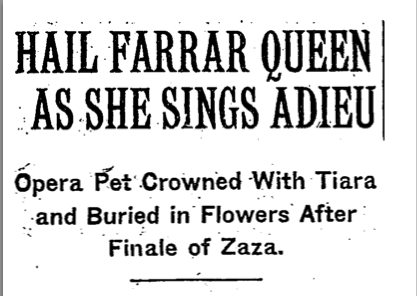
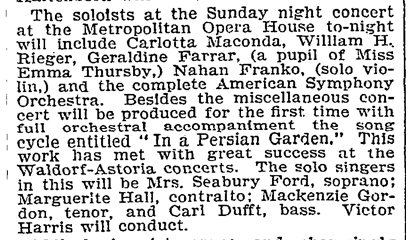


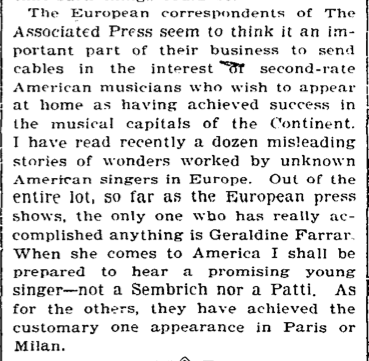

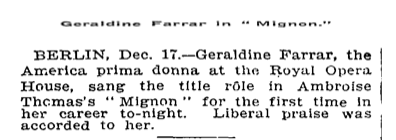
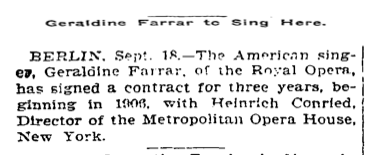
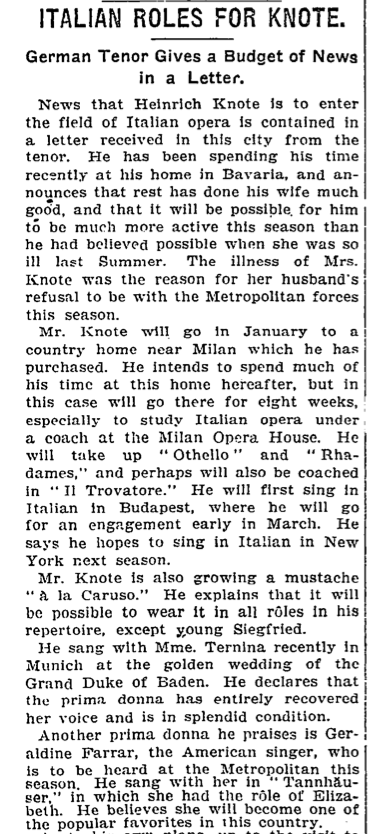
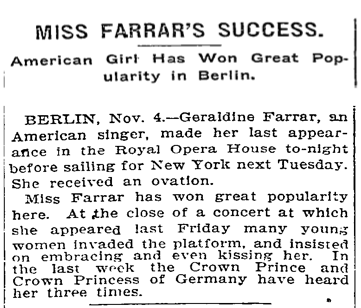
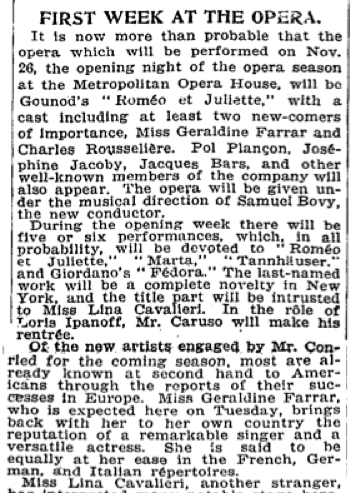
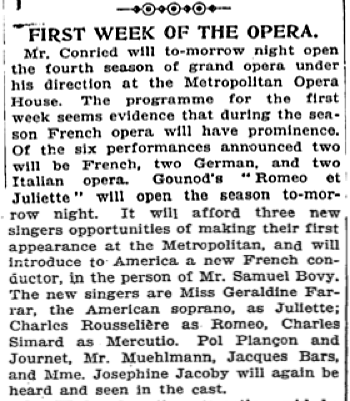

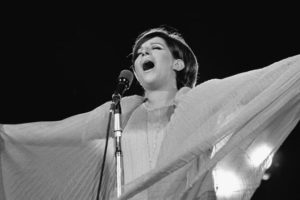

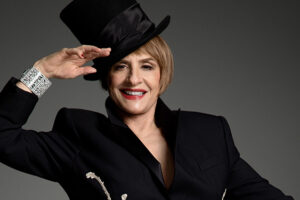





Comments